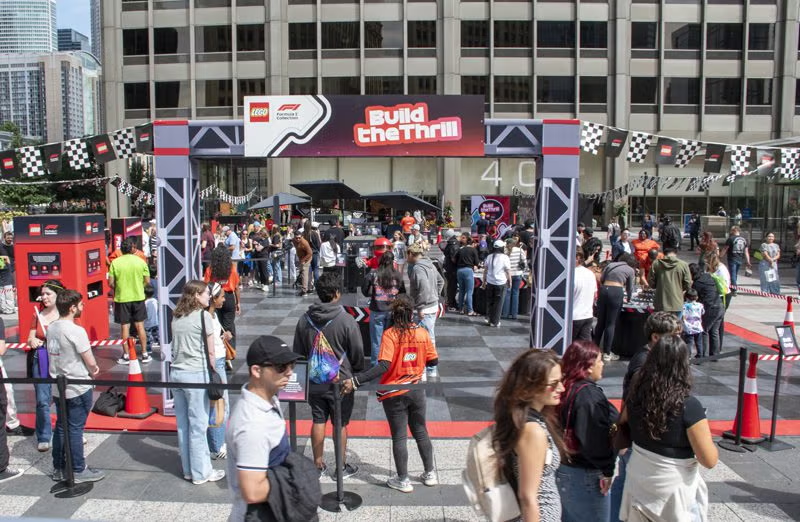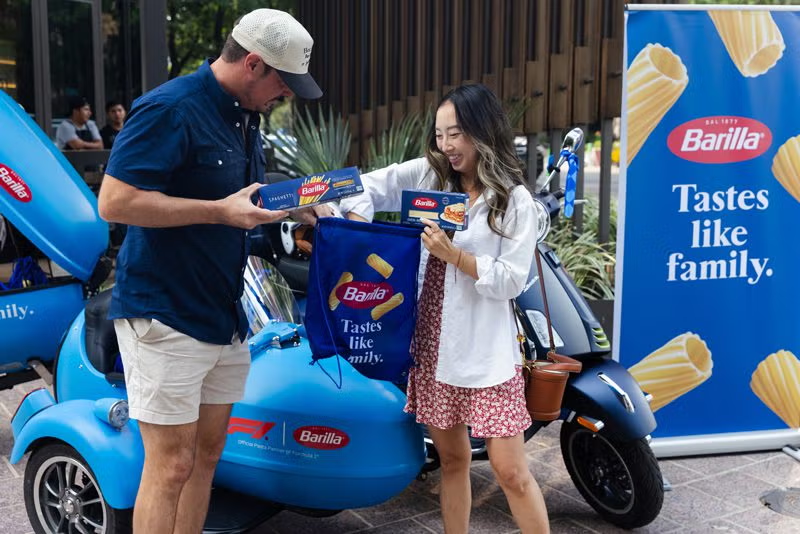LEGO’s multiyear alliance with Formula 1 reinterprets Grand Prix spectacle as tactile, family-oriented encounters at the circuit and, importantly, beyond it. The traveling “Off Track” program complements the at-race “Build the Thrill” footprint, deploying hands-on play zones, drivable large-scale models, and retail-based learning hubs to cultivate the next wave of fans across multiple markets.
The partnership, introduced alongside late-2024 product reveals and scaling through 2025, spans sets aligned to F1’s 75th anniversary and a global live-experience plan. It encompasses activations at Grand Prix as well as in non-race cities, linking licensed products with experiential moments designed to encourage trial, building, and imaginative role-play.
“Build the Thrill” situates modular play environments at Grand Prix weekends, while “Off Track” transposes the experience into urban centers that do not host races—expanding reach and enabling longer dwell for families. Early implementations appeared in Miami, with additional U.S. activity in Austin and Las Vegas, and “Off Track” pop-ups scheduled for two non-calendar markets to seed demand.
Off-circuit touchpoints lower the participation threshold for parents and children unlikely to attend a race. The traveling format provides approachable spaces—build stations, take-home mini-activities, and photo-forward hero assets—that bridge the distance between broadcast pageantry and everyday play.
At the 2025 Miami Grand Prix drivers’ parade, F1 drivers piloted ten drivable, life-size LEGO cars, each representing a team. The models approached 1:1 scale, incorporated roughly 400,000 standard bricks apiece, weighed about 1,000–1,500 kg, and reached approximately 20 km/h—an execution that dominated social feeds and headlines.
The build fleet required months of preparation, a crew of 26, and roughly 22,000 hours of work. Bricks were integrated around a reinforced metal frame and bonded for structural integrity, balancing faithful representation with driver safety during parade operations.
Following Miami, LEGO signposted U.S. race-week presence in Austin and Las Vegas and teased additional city stops. This graduated cadence—race venues paired with “Off Track” host cities—keeps the campaign visible across the season and distributes access more equitably across regions.
Select LEGO Stores across North America, EMEA, and China layered racing-themed play experiences, while LEGO and LEGOLAND Discovery Centres hosted build challenges to convey the fundamentals of designing and “engineering” an F1 car—converting curiosity into competence via guided play.
The live experiences align with sets across LEGO Speed Champions and Technic, including Mercedes-AMG F1 W14 models for both younger builders and adults. Pull-back Technic kits and advanced 1:8 builds channel trackside excitement into repeatable, at-home play loops that reinforce fandom.
By fusing hands-on construction with elite motorsport, the program frames building as a gateway to STEM-adjacent exploration—design, aerodynamics, and problem-solving—while giving families culturally resonant reasons to attend, share, and purchase. The drivable parade cars function as mobile beacons that draw audiences toward build zones and retail ecosystems.
Media coverage chronicled the spectacle, extending its reach beyond on-site attendance. F1’s owned channels, mainstream tech and sports outlets, and industry trades produced a layered PR effect that validated the concept and accelerated organic discovery.
The audience strategy recognizes that many young enthusiasts discover F1 outside live venues. Off-track pop-ups and store events offer participation without tickets, while at-race installations provide existing fans a second narrative—playful, inclusive, and photogenic—to circulate.
The series links experiential awe to product ecosystems, creating an immediate path from hands-on engagement to purchase. In parallel, the partnership expresses a long-term aim: to cultivate a future pipeline of F1 supporters by embedding the sport within family routines and childhood memories.
Measurement centers on experiential signals: total engagements within play zones, redemption of take-home kits, content shares per visit, time-on-site, set attach rate in nearby stores, and regional uplift in F1-licensed sets after each stop. Media value from national and trade coverage, paired with brand-lift studies among kids and parents, rounds out the dashboard.
Accessibility remains central. Store and Discovery Centre programming emphasizes open, drop-in windows and free make-and-take components (such as steering wheel builds and posters), widening participation regardless of race, attendance, or budget.
Execution depends on coordinated operations with Formula 1, teams, and local authorities to enable street-safe displays and parade logistics. The campaign requires specialist fabrication, transport planning for large models, and on-site staffing trained for both safety and child-friendly facilitation.
Risk management and approvals are built in. Life-size models moved under controlled conditions and were engineered with reinforced frames, adhesive bonding, and capped speeds. Brand, legal, and broadcast stakeholders aligned on parade choreography to safeguard drivers, fans, and intellectual property while preserving broadcast-quality visuals.
Next steps include taking the full-size parade cars on the road for additional stops after Miami. As the season advances, “Off Track” provides a modular toolkit to meet audiences where they already gather—downtown districts, family attractions, and flagship retail.
A high-fidelity hero moment paired with low-friction participation mechanisms—free building, posters, and retail activations—creates a funnel from spectacle to sustained engagement. The mix of scarcity (time-bound pop-ups) and ubiquity (global store programming) sustains momentum.
Looking to 2026, the partners can broaden city selection, co-create curriculum-style build challenges, and synchronize new set launches with “Off Track” dates—binding release cycles to real-world touchpoints and reinforcing the journey from first build to lasting fandom. Documentary-style content, already hinted at, can extend the narrative between stops.















